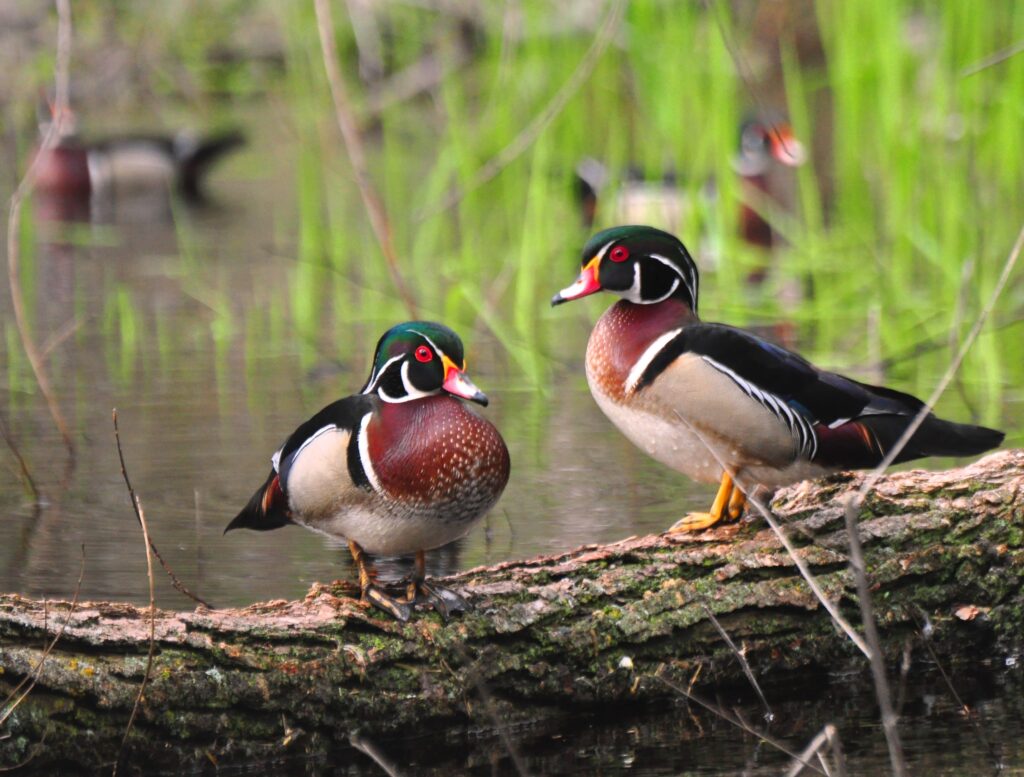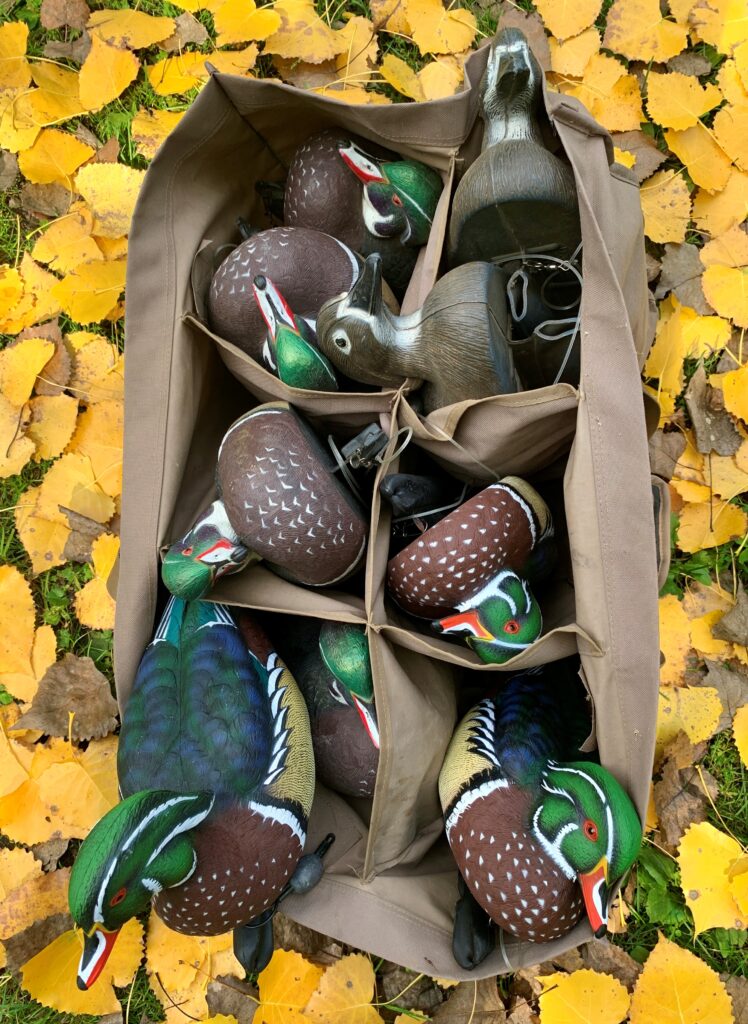Photography courtesy of Lowell Washburn, all rights reserved.
Even when you’re anticipating their arrival, wood ducks have a way of sneaking up on a guy. Of course, there are those happy occasions when the two-syllable, screeching call of an incoming hen will provide a two second warning that woodies are on their way. More often than not, however, you’ll remain completely clueless to their presence until you suddenly spot a group zigzagging through the autumn treetops on their way to your decoys. You have a split second to react. Dropping from the sky at breakneck speeds, wood ducks are a thrill to behold and a challenge to bag.

I freely admit to being biased. Year in and year out, I spend more time with wood ducks than with any other species of waterfowl. The annual cycle begins in late winter with the sprucing up of predator proof wooden nest boxes designed to supplement the production occurring in natural cavities. Once spring arrives, I watch, listen, photograph, and shoot videos as flocks containing several newly arrived pairs begin selecting their individual nest sites. During summer, I continue to observe as resident broods progress from tiny fluffy ducklings to fledging adolescents. October is the most intense month of the year; a time when I watch, listen, hunt, and hopefully consume wood ducks.

When my dad first introduced me to duck hunting in 1959, wood ducks were scarce. And although we frequently hunted along the fringe of semi-wooded backwaters, we were much more likely to encounter multiple flocks of mallards or green-winged teal than we were to see a single woodie. Times have changed. Today, wood ducks have increased to the point that they annually rank third in the hunters’ bag. Only mallards and blue-winged teal are harvested in greater numbers.

Shy and reclusive, wood ducks prefer to frequent the densest, most hard to reach habitats they can find. Densely wooded stream corridors, remote river backwaters, tangled willow sloughs and shallow cattail jungles rank high on their list of favorites. Gaining access to these watery haunts is not without challenge. When it comes to pursuing wood ducks, getting there is NOT half the fun. On a more positive note, equipment needs are minimal, and wood duck hunters can afford to ‘travel light’. Eight or ten realistic decoys, some camo face paint, and a handful of ammo are all you need. Keep in mind that tight habitats generally dictate close range shooting. When it comes to hunting woodies, a lightweight, open choked 28-gauge shotgun loaded with 5/8 oz. of #7 steel makes the perfect combination for collecting your duck dinner.
Although the bag limits for many waterfowl species runs as high as six per day, the daily take on wood ducks is restricted to three birds. That’s fine by me. I’d rather take three prime wood ducks from a pristine setting than bag six of anything else. It only takes one bird to make a meal and, with the exception of canvasbacks, no duck provides better table fare than an acorn fattened wood duck. No other duck is more elegantly colorful, and no other duck has the ability to consistently lure hunters into more isolated and beautifully unspoiled habitats. No other species provides a greater level of instant excitement than when, like feathered meteors, a surprise flock of screeching wood ducks comes bursting through the technicolor canopy of an October backwater. For me, it’s a sight and sound that remains unsurpassed.


 Tom Cope
Tom Cope Sue Wilkinson
Sue Wilkinson Susan Judkins Josten
Susan Judkins Josten Rudi Roeslein
Rudi Roeslein Elyssa McFarland
Elyssa McFarland Mark Langgin
Mark Langgin Adam Janke
Adam Janke Joe Henry
Joe Henry Kristin Ashenbrenner
Kristin Ashenbrenner Joe Wilkinson
Joe Wilkinson Dr. Tammy Mildenstein
Dr. Tammy Mildenstein Sean McMahon
Sean McMahon